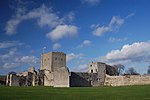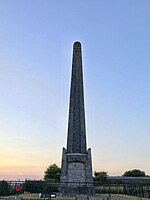Trafalgar Wharf, Portsmouth
Ports and harbours of HampshireUse British English from August 2017Vague or ambiguous time from December 2017Wharves in the United Kingdom
Trafalgar Wharf is a shipyard in Portsmouth accommodating marine engineering businesses ranging from sailmakers and boat brokers to boat builders. It was formerly the VT Halmatic shipyard, owned by VT Group and latterly by BVT Surface Fleet. In November 2023 the site was acquired by Premier Marinas who also operate Port Solent marina opposite.
Excerpt from the Wikipedia article Trafalgar Wharf, Portsmouth (License: CC BY-SA 3.0, Authors).Trafalgar Wharf, Portsmouth
Hamilton Road, Portsmouth Cosham
Geographical coordinates (GPS) Address Website Nearby Places Show on map
Geographical coordinates (GPS)
| Latitude | Longitude |
|---|---|
| N 50.84604 ° | E -1.11627 ° |
Address
Novatech
Hamilton Road
PO6 4PU Portsmouth, Cosham
England, United Kingdom
Open on Google Maps







